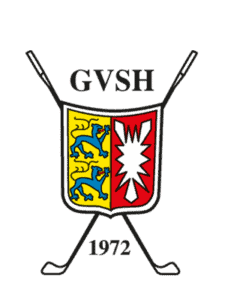GolfLandscapes investigates biodiversity in 40 clubs
What factors control biodiversity on golf courses? A team of European scientists from Norway, Sweden, Great Britain and Germany is currently investigating this question as part of the GolfLandscapes project. A total of 40 golf courses are taking part, including eight golf clubs from the Munich area in Germany.
“We have selected very different types of landscape here and now want to understand how biodiversity can be promoted on the golf courses,” explains Prof. Dr. Johannes Kollmann, who heads the Chair of Restoration Ecology at the Technical University of Munich.
Subscribe to our newsletter!
News & trends about sustainability in golf
The location of a golf club often plays an important role here. While the GC Olching, for example, is very close to the town, the GC Feldafing is located in a historic park landscape. Parts of the Aschheim golf course were built on a former gravel pit, while some of the courses at GC Eichenried were built around former moors. The two golf courses of the Munich GC in Straßlach and Thalkirchen, the GC Wörthsee and the GC Dachau are also included.
“What is important for biodiversity on golf courses is the landscape structure in the vicinity of the golf course,” explains Kollmann. An isolated position of a golf course in the midst of agricultural monocultures can therefore certainly lead to a lower level of biodiversity. The same applies to courses that are surrounded by purely urban areas.
Monitoring birds and plants
To date, GolfLandscapes has recorded birds and vegetation as part of a standardized process. A distinction was made between certain types of use and habitat – for example roughs or bunkers. In an interim report, an overview of the plants and birds found at the golf courses has now been forwarded to them.
The Olching Golf Club has analyzed the initial data with interest and hopes to learn from it. “We haven’t been involved in the topic of nature for very long, but we are currently working on certification for Golf & Nature Gold. In this context, the project is helpful for us,” summarizes Kai-Otto Landwehr, Vice President of GC Olching. “Our greenkeeper is very committed in this area and we have already been able to attract attention in the local press with the first evaluations.” With the skylark and the cuckoo, two bird species were identified on the 18-hole course that are endangered according to the German Red List.
Scientific surveys like these are “extremely important” for golf courses, says Florian Kohlhuber, Club Manager at GC Feldafing. “This is the only way we can document for non-golfers and authorities that a lot is being done for nature on our golf course. We carry out inspections several times a year to obtain the relevant data.”
But what results from the data? How can golf courses continue to work with it? This is where the GolfLandscapes scientists point out deficits and provide tips. As part of the evaluation, all eight courses are indicated whether they need to do more to improve meadows, bodies of water or hedge structures, for example. “There is generally a lot of potential here at golf courses,” says Kollmann, who is also involved in the German Golf Association’s GolfBiodivers project with 64 golf courses and four German universities. “Golf courses sometimes take a somewhat opportunistic approach to the topic instead of tackling it with structure,” is his observation of some courses.
Depending on the golf course’s location and its surroundings, available habitats and playing areas, the possibilities for promoting biodiversity are different in each case. This is another reason why the results of the 40 European golf courses cannot be compared. “Our aim, however, is to ultimately answer the question of what constitutes degraded nature and what constitutes high-quality nature on golf courses,” says Hans Martin Hanslin, researcher at the Norwegian Institute of Bioeconomy Research (NIBIO), summarizing the objective. He is coordinating the project, which STERF, the Scandinavian Turfgrass and Environment Research Foundation also fund.
After three years, 40 golf courses in Europe will also be able to answer this question regarding their individual course results and can start with the right upgrading work.








